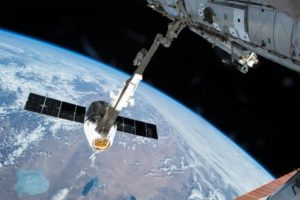SpaceX has had a busy 2018. The company has been making history continuously over the course of the last several months, and now, Elon Musk’s space startup is looking to grab some headlines once again. SpaceX will be launching one of its Falcon 9 rockets to send 5,800 pounds worth of supplies and science experiments to the International Space Station. This precious cargo will be carried within a SpaceX Dragon capsule, which has also previously made a trip to the International Space Station.
SpaceX has quickly proven itself to be the private provider of choice for NASA, who seems to be making a habit of using the company’s rockets and capsules to bring various necessities into space. In fact, it’s the second time that NASA has used a Falcon 9 rocket to deliver equipment — the first mission took place in August 2017. It’s the third time that the Dragon cargo capsule will visit the ISS, making both SpaceX craft regular veterans of the station.
Unlike in previous missions, however, SpaceX will not attempt to land the Falcon 9 after its launch. Rather, it will seek to collect data as the rocket falls back down to Earth, landing somewhere in the ocean. “This one seemed like a really good opportunity to fly a trajectory a little bit out more towards the limits,” Jessica Jensen, director of Dragon mission management at SpaceX, said during a press briefing about the mission. “And that way, our engineers can collect additional data, not only during reentry but during landing that will be useful for the future.”
So what exactly is SpaceX carrying on behalf of NASA? As The Verge reports, onboard the Dragon are a few new technologies, like an instrument that will live outside the ISS and analyze thunderstorms on Earth. There will also be a research platform that examines the effects of artificial gravity on tissues and plants. The Dragon will remain attached to the ISS for about 30 days.

On its way back, the capsule will also be carrying a few important items, including NASA’s old Robonaut 2, a humanoid bot that has lived on the ISS for the last seven years. It will get some serious attention from scientists back on Earth — the Robonaut 2, alas, has been non-functional since 2014.
You can check out the launch of the used Falcon 9 on Monday, April 2 at 4:30 p.m. ET (assuming no delays boggle the timing). Because the flight has what is called an instantaneous launch window, even the slightest delay will end up pushing the launch to tomorrow. There is currently a backup launch date on Tuesday, April 3 at 4:08 p.m.
NASA will begin its live coverage beginning around 4 p.m. ET, if you’re eager to watch every little aspect of today’s flight.


